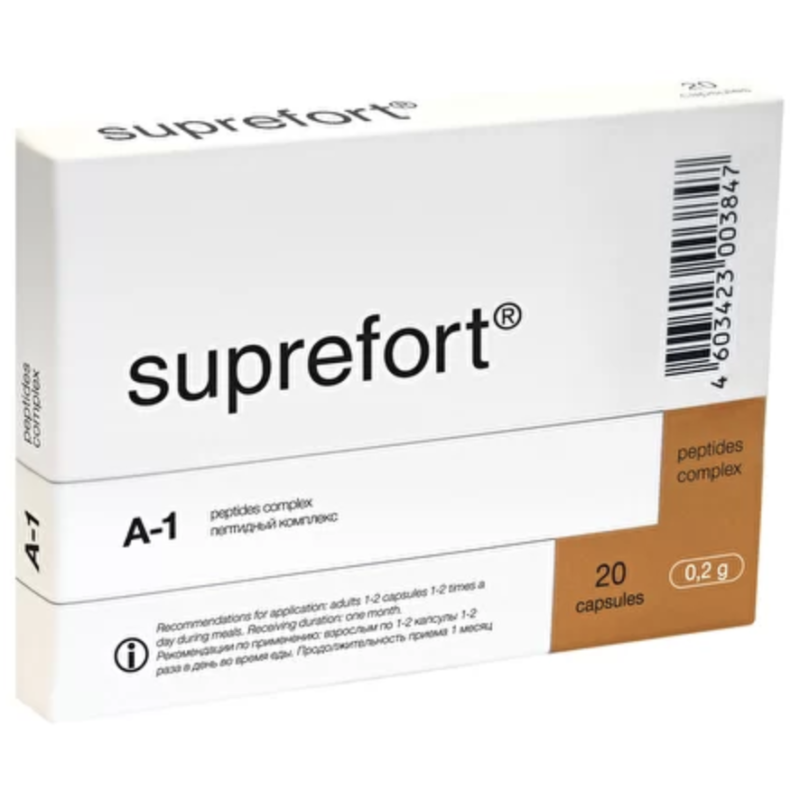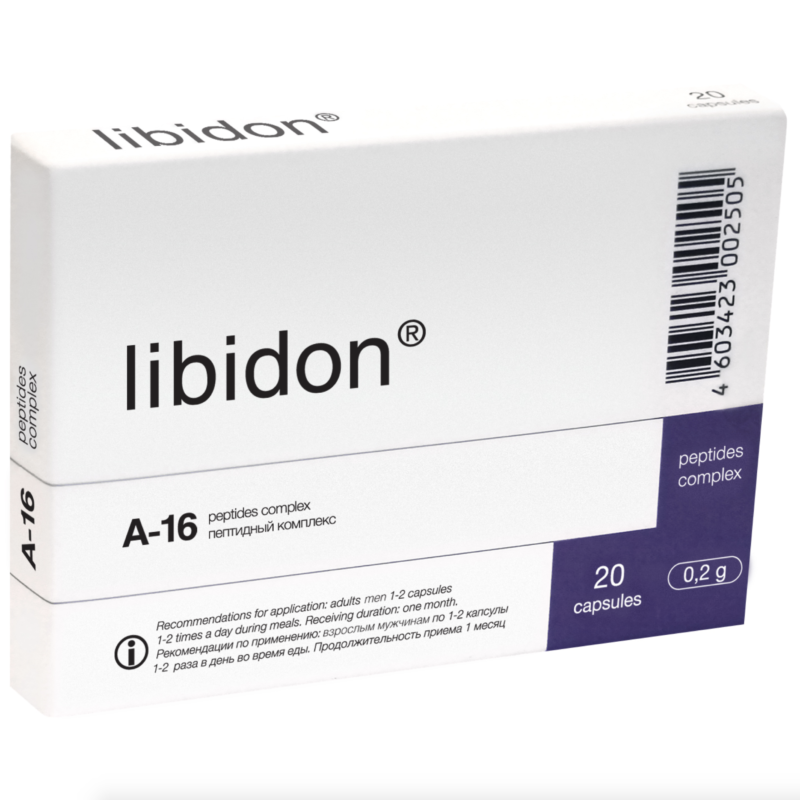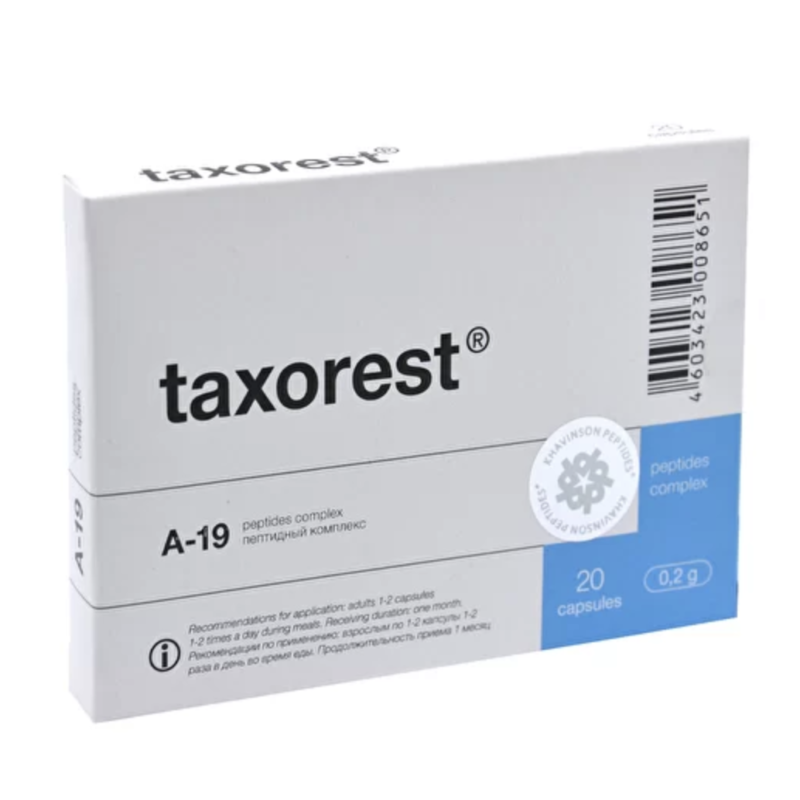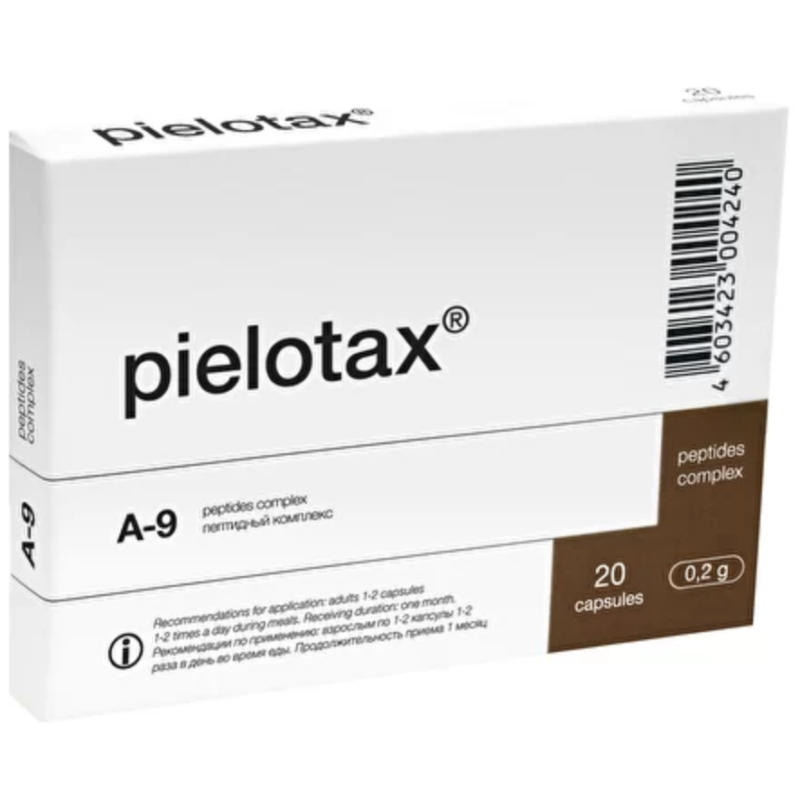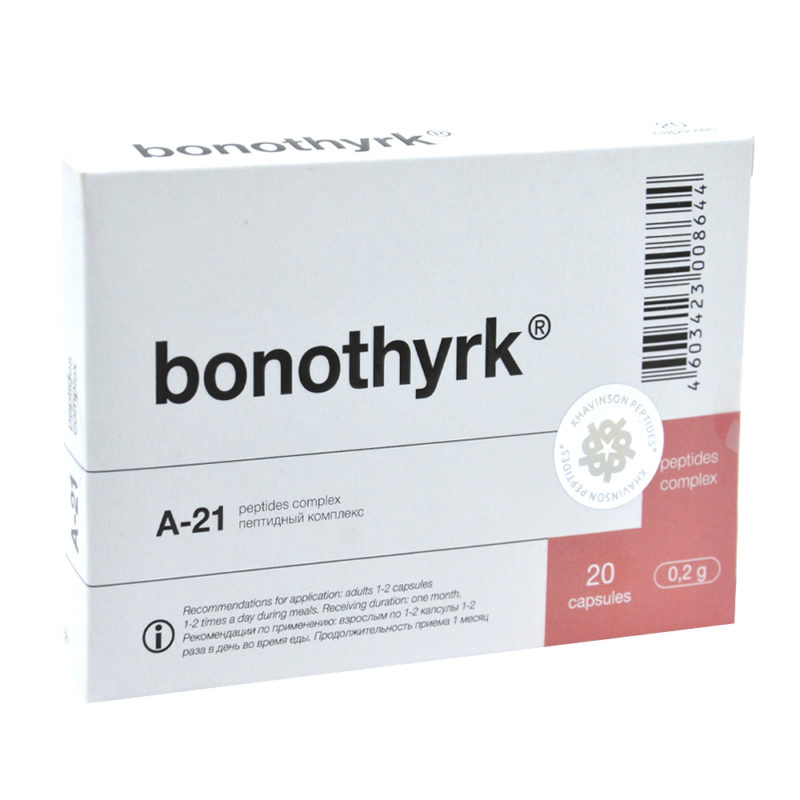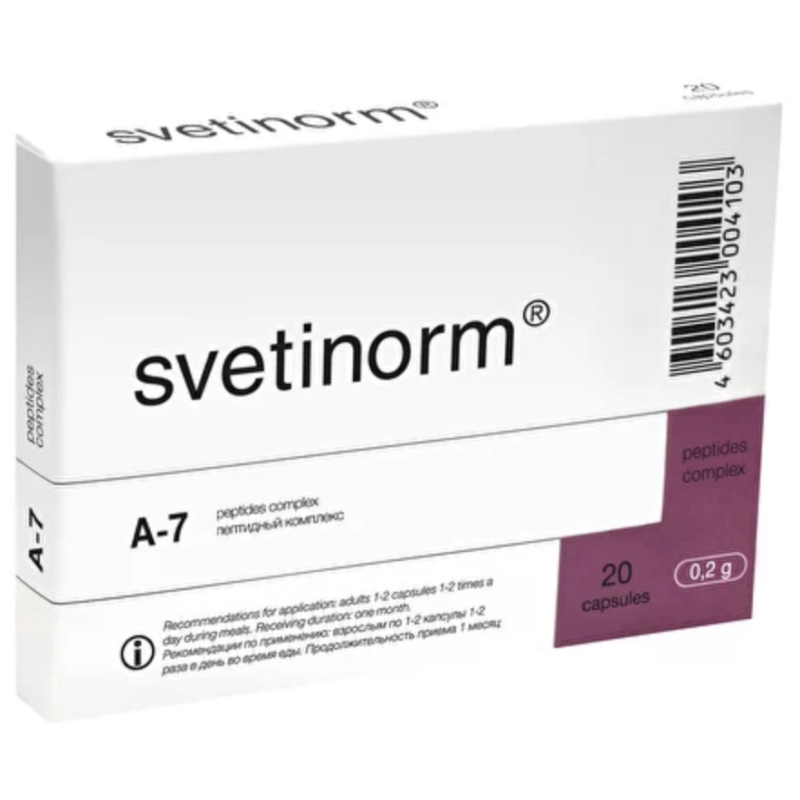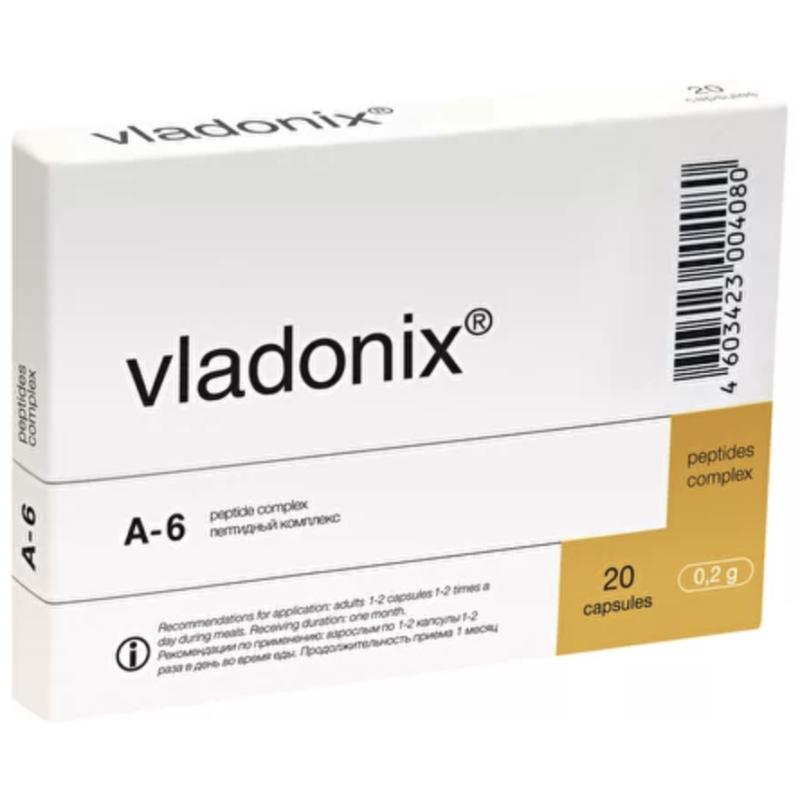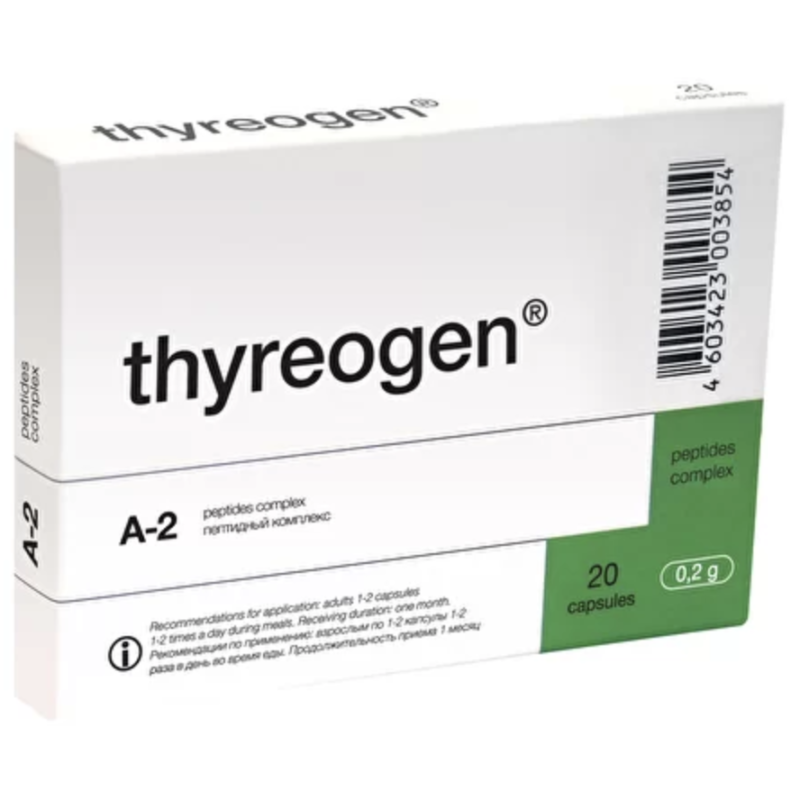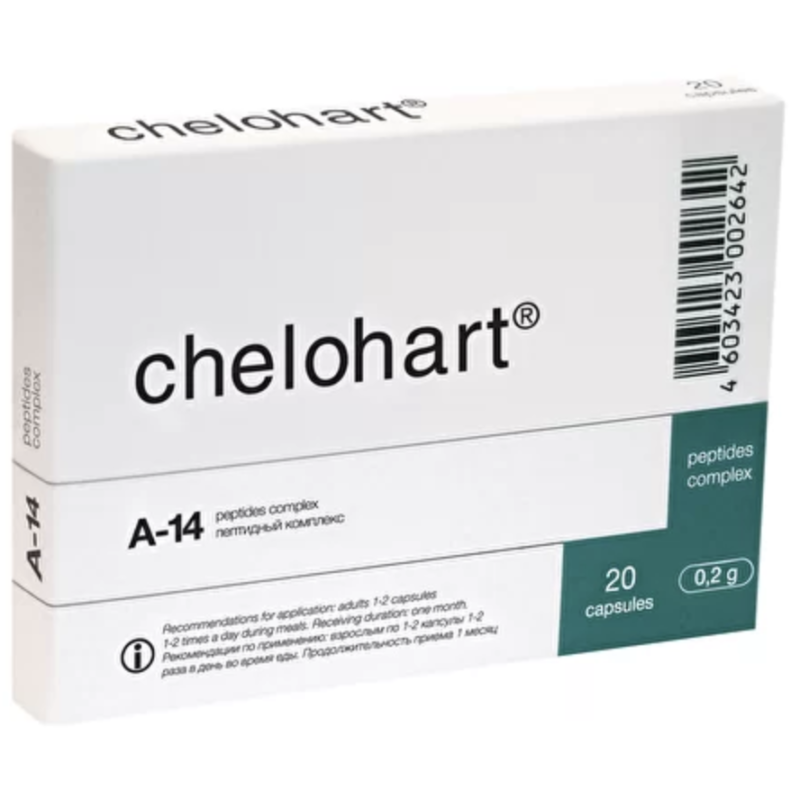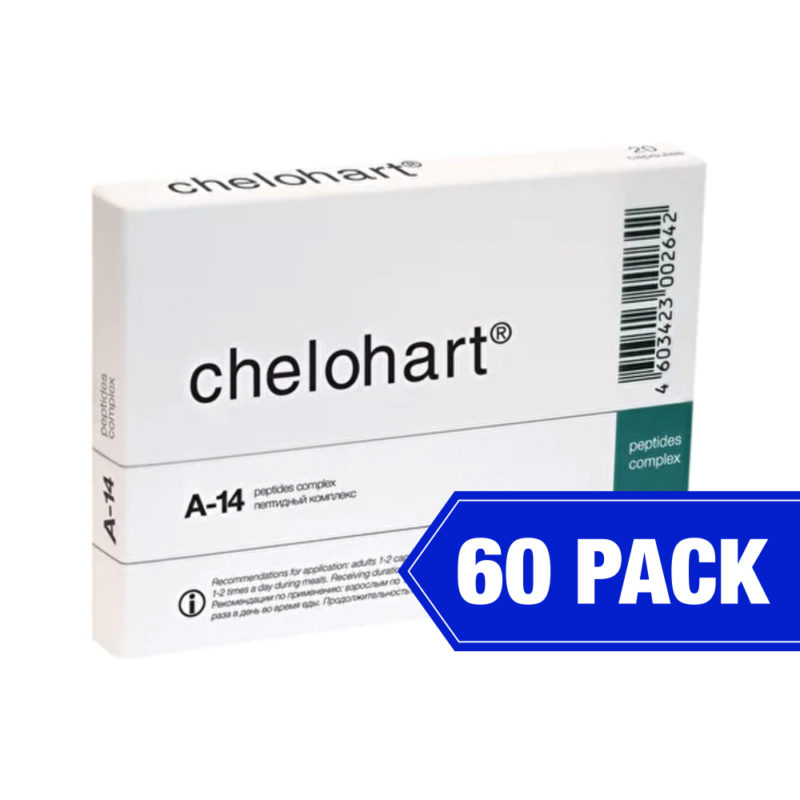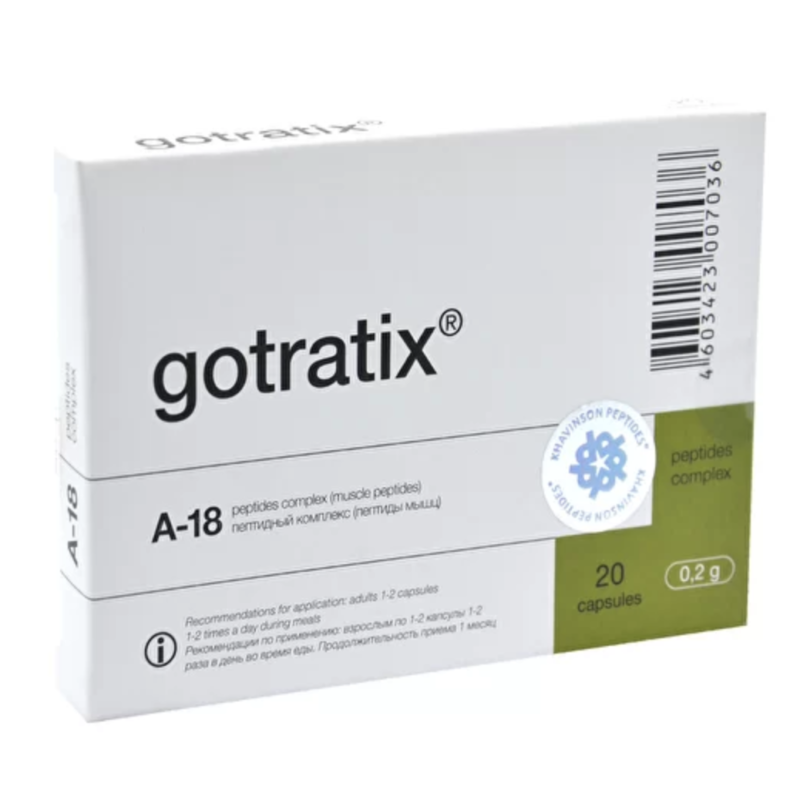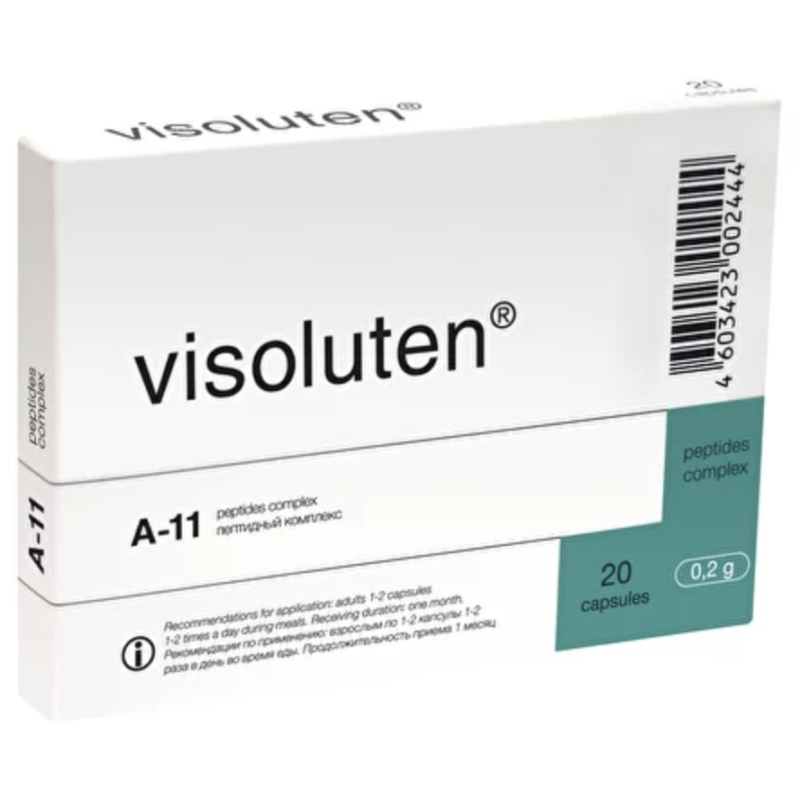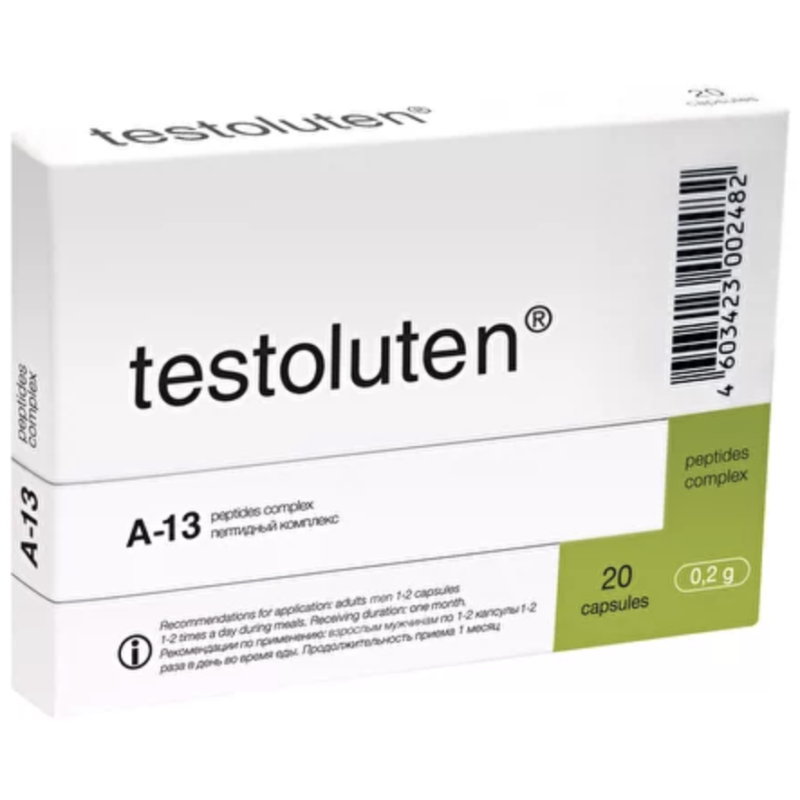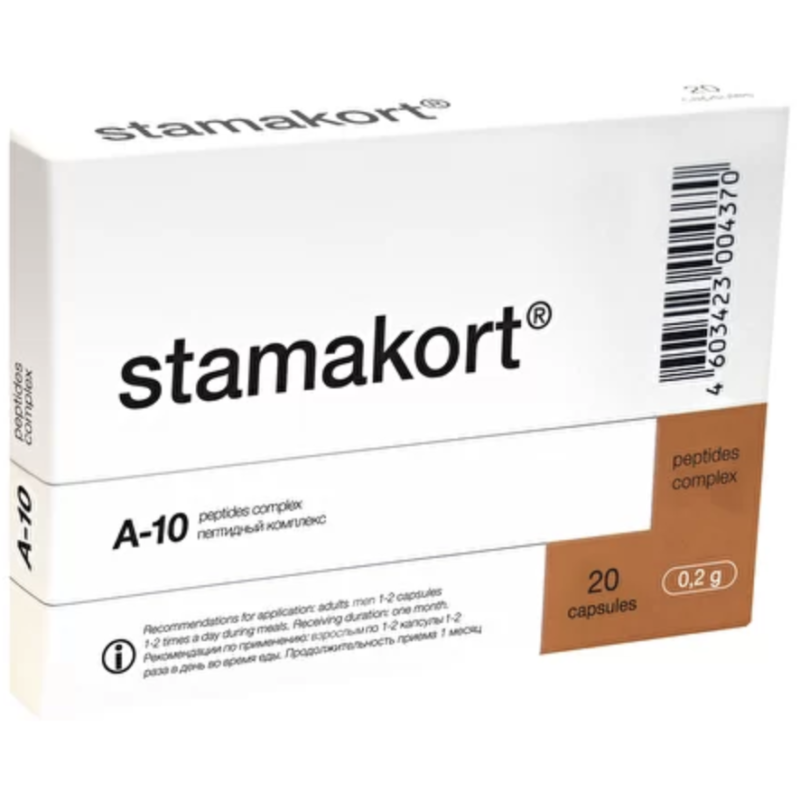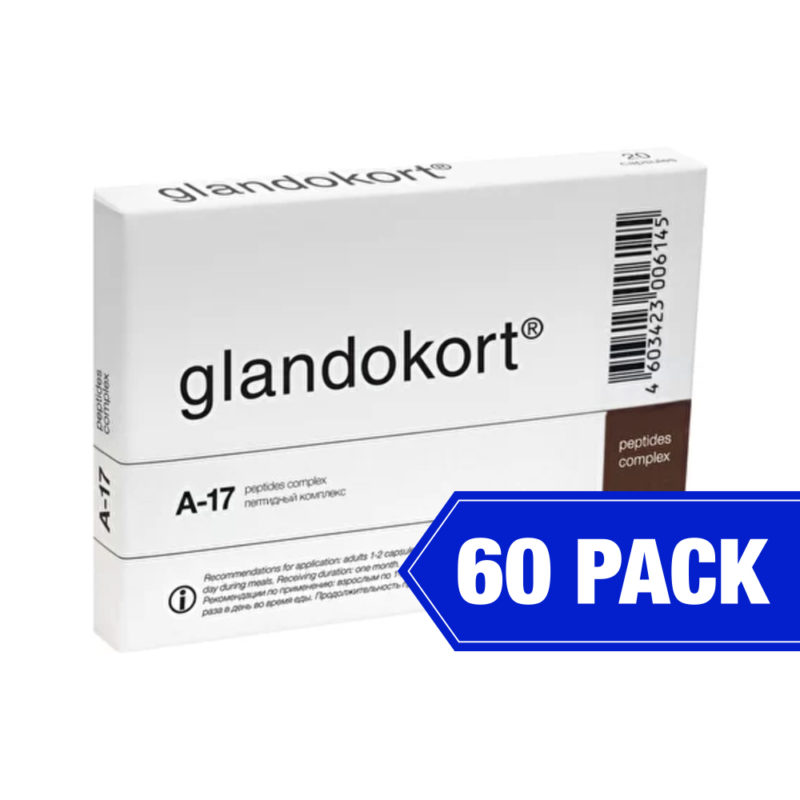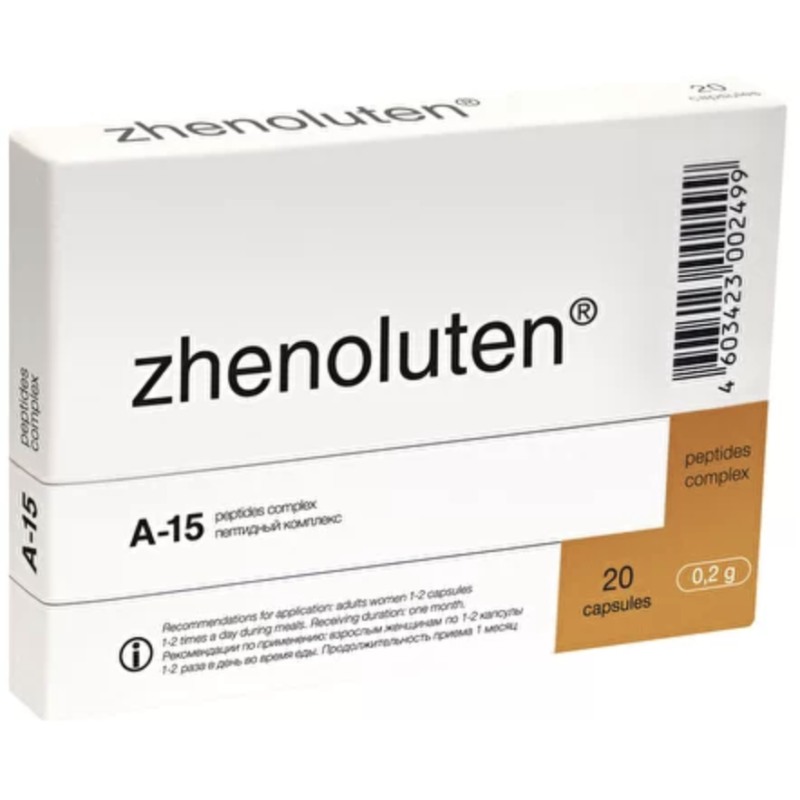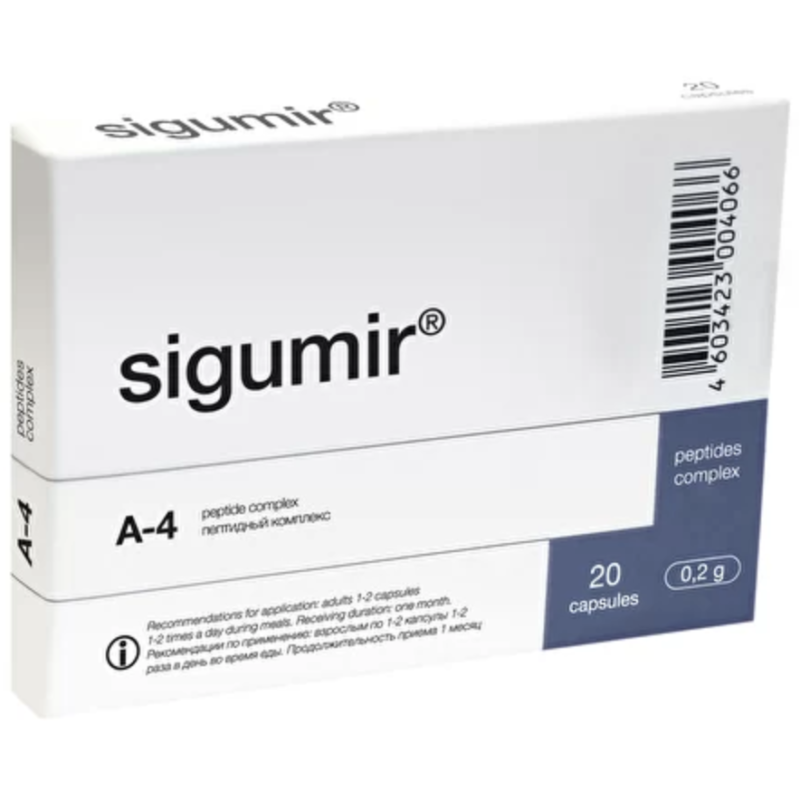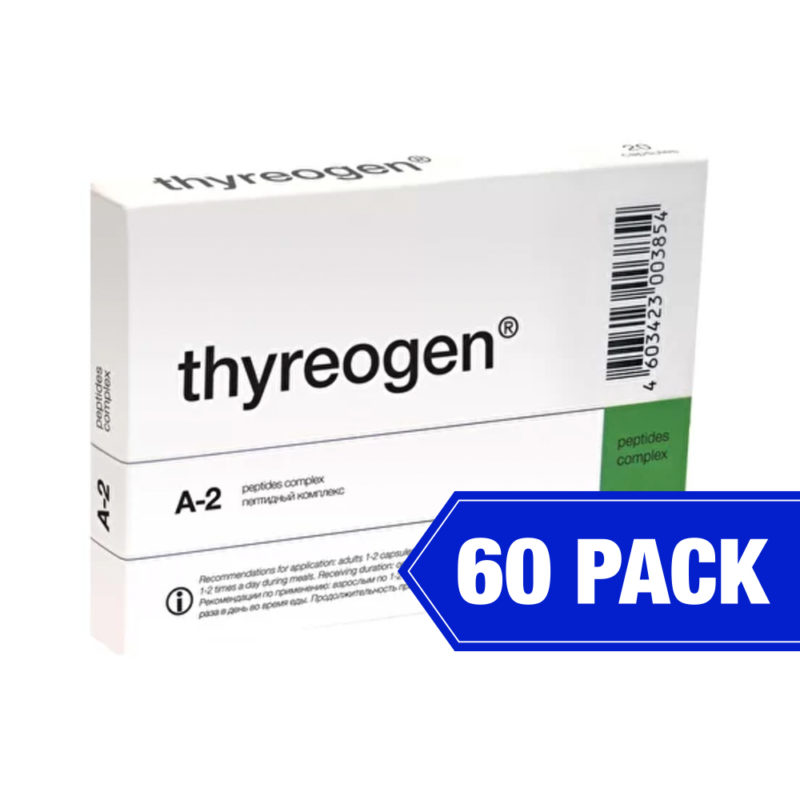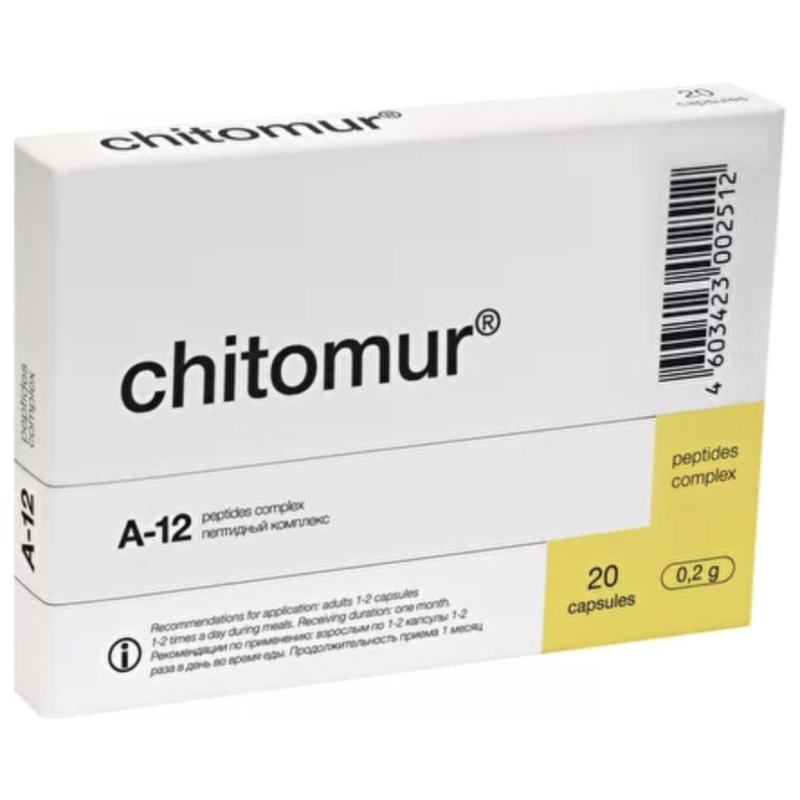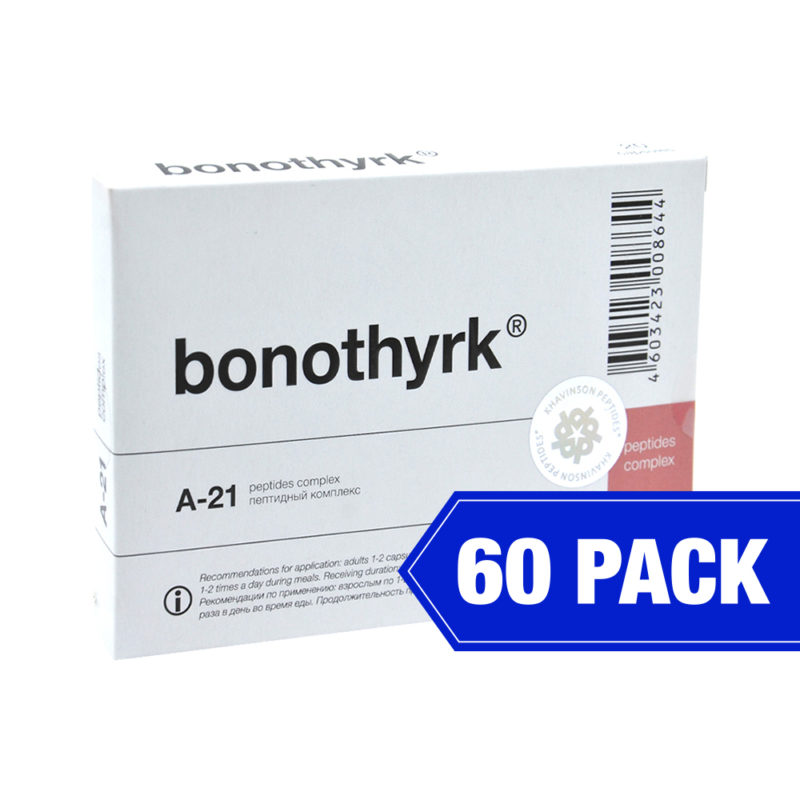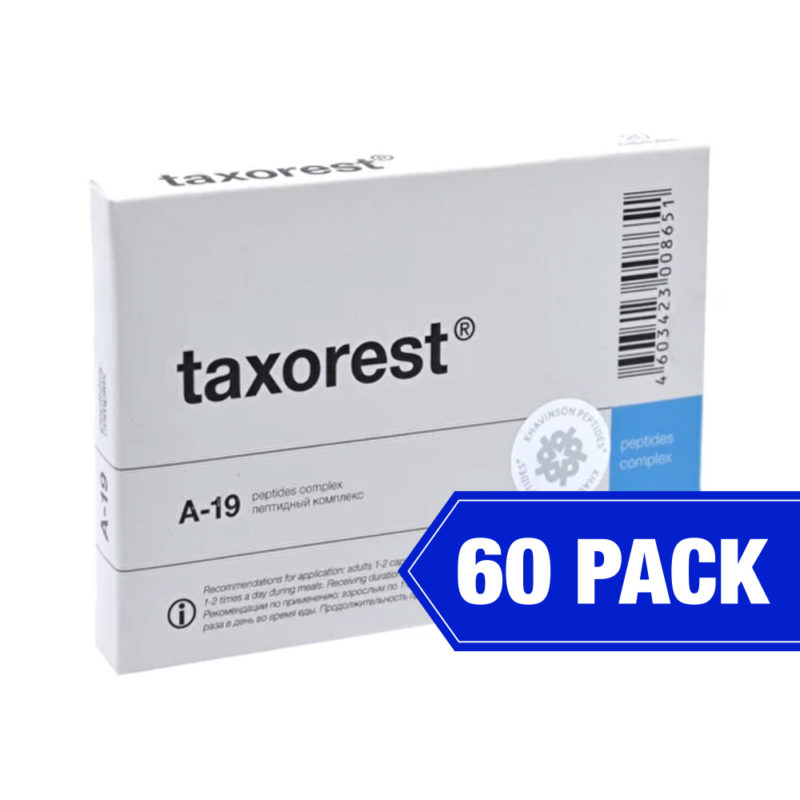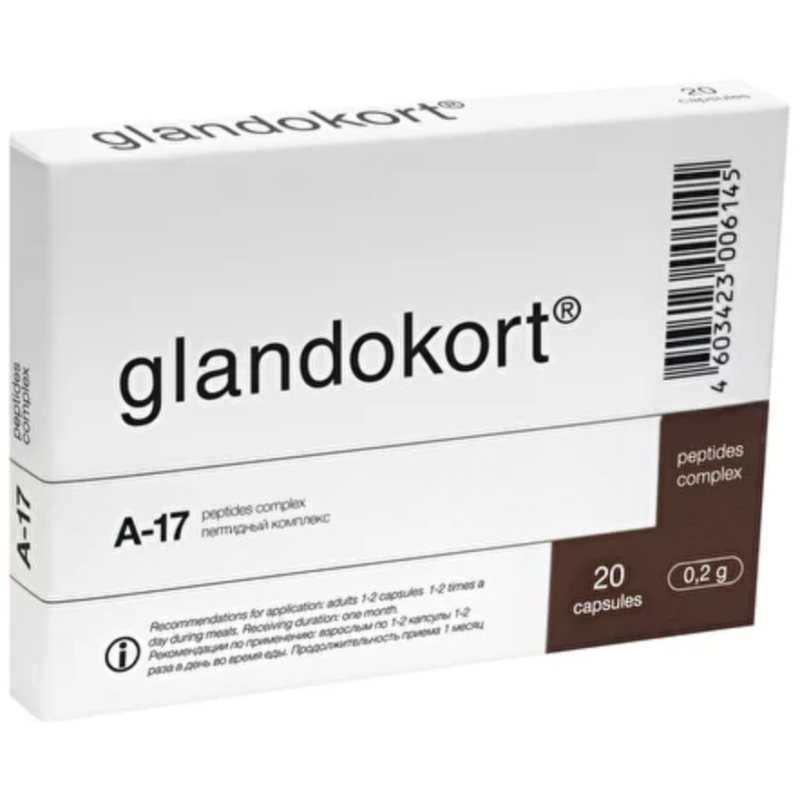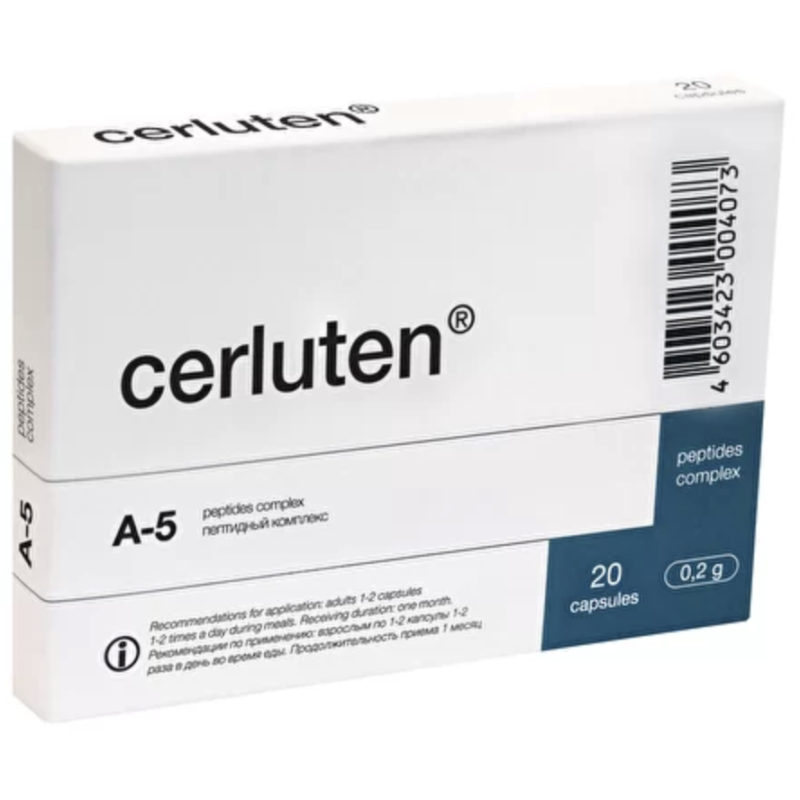Peptide regulation of aging
Introduction
For many years the phenomenon of ageing had been studied within the framework of ethics and social issues. Only in the last century the society realized that the process of ageing should be studied from a different viewpoint, that is, as a special physiologic mechanism bearing a certain evolutionary significance [26,30,67].
Ageing is the most complicate issue in medicine and biology. The process of ageing is a gradual involution of tissues and development of organism malfunctioning. Its symptoms appear already at the end of the reproductive period and become more pronounced with ageing [20].
At the end of the XIX century I. Mechnikov showed that enhancement of cellular immunity contributed to a lifespan increase. He developed a phagocytic theory of immunity and considered human organism capable of combating pathologic ageing [76]. In 1908 he was awarded the Nobel Prize in Physiology or Medicine together with P. Ehrlich. And only one century later, P. Doherty and R. Zinkernagel conducted detailed studies in specificity of cellular immunity in case of viral infection (the Nobel Prize in Physiology or Medicine 1996).
J. Watson and F. Crick jointly with M. Wilkins were awarded the Nobel Prize in Physiology or Medicine in 1962 “for their discoveries concerning the molecular structure of nucleic acids and its significance for information transfer in living material”.
In 1961 F. Jacob and J. Monod suggested a model of genetic regulation of protein synthesis with the participation of low molecular ligand, which ousts repressor and triggers allosteric conformational transition in the DNA structure of bacterial cell [33]. In 1965 they were awarded the Nobel Prize in Physiology or Medicine along with A. Lwoff. Many years of scientific work by M. Nirenberg and G. Khorana resulted in deciphering genetic code and defining codons (triplets of nucleotides) for each of twenty amino acids (the Nobel Prize in Physiology or Medicine, along with R. Holley, 1968).
Fundamental investigation in nucleic acids biochemistry and identification of RNA and DNA bases sequence were conducted in the 60-ies and 70-ies of the XX century by P. Berg, W. Gilbert and F. Sanger (the Nobel Prize in Chemistry, 1980).
Experimental and clinical studies in gerontology evidenced that immunity of the organism is among the first systemic functions to reveal disorders with ageing [22, 31]. Thymus peptide extracts and peptides, isolated from these extracts, were the first preparations suggested for immune deficit correction [21, 27, 29]. The origin of small regulatory peptides pool in a young organism became evident after the discovery of ubiquitin-mediated protein degradation in proteasomes made by A. Ciechanover, A. Hershko, I. Rose (The Nobel Prize in Chemistry, 2004). Small peptides were shown to play an important role for transmission of biologic information, as for example autocrine hormones and neuropeptides do. A high molecular protein can be hydrolyzed in different ways, degradating into several small peptides. Due to this mechanism there can be produced peptides with completely different biologic functions as compared to the maternal macromolecule [32]. S. Karlin and S. Altschul proved in their works that there are several types of recurring blocks of amino acid residues with charged side chains in protein macromolecules. Nuclear proteins: transcription factors, centromere proteins, and HMG proteins — reliably contain the greatest number of such blocks [34]. Proteasome hydrolysis of these proteins in the nucleus can provide presence of the sufficient amount of peptides with charged side chains.
However, the regulating role of small peptides had never been discussed in the concepts of gene control of protein synthesis in higher organisms before we started the research.
Alongside with immunity decrease associated with age there occur other alterations on cellular level. In particular, there take place changes in the inner structure of cellular nucleus. DNAprotein complex of cellular nucleus (chromatin) gets organized into chromosomes only in case of cell division. In stationary state chromatin is found in two forms: euchromatin and heterochromatin [74]. Heterochromatin is usually localized in the nucleus periphery and contains generally inactive part of genome: genes blocked by repressors. The ratio euchromatin/heterochromatin changes with ageing due to reduction of active euchromatin. This leads to the decrease of protein synthesis in a cell [75].
Thus ageing phase of the organism reveals several levels of dysfunction and may be classified as a systemic syndrome. Promising results of immunodeficiency correction by endogenous regulatory peptides testified the necessity of further enhanced studies [27, 29, 31].
Discovery of peptide regulation of ageing
It is known that specific limit of animal and human lifespan is approximately 30-40% higher than their mean lifespan. It could be referred to the impact of adverse factors causing changes in the gene structure and expression accompanied by disorders in the protein synthesis and organism functioning (Fig. 1).
Specific limit of human lifespan — 110–120 years.
Recent achievements in theoretical and applied gerontology allowed goal-seeking regulation of ageing-associated alterations. Therefore, one of the priorities of gerontology today consists in prevention of premature ageing and age-associated pathology, finally aimed at the increase in an average lifespan, maintaining active longevity and reaching an upper limit of human life [30,51].
The integration of findings made by fundamental research into medicine resulted in a better understanding that clinical progress largely depends on molecular medicine, i.e. investigations conducted in genes and biologically active molecules. The achievements in genetics, molecular and cell biology often underlie molecular medicine in designing new pharmaceuticals and technologies.
The studying of genetic mechanisms of ageing is in the forefront of molecular medicine today. There have been defined
Figure 1
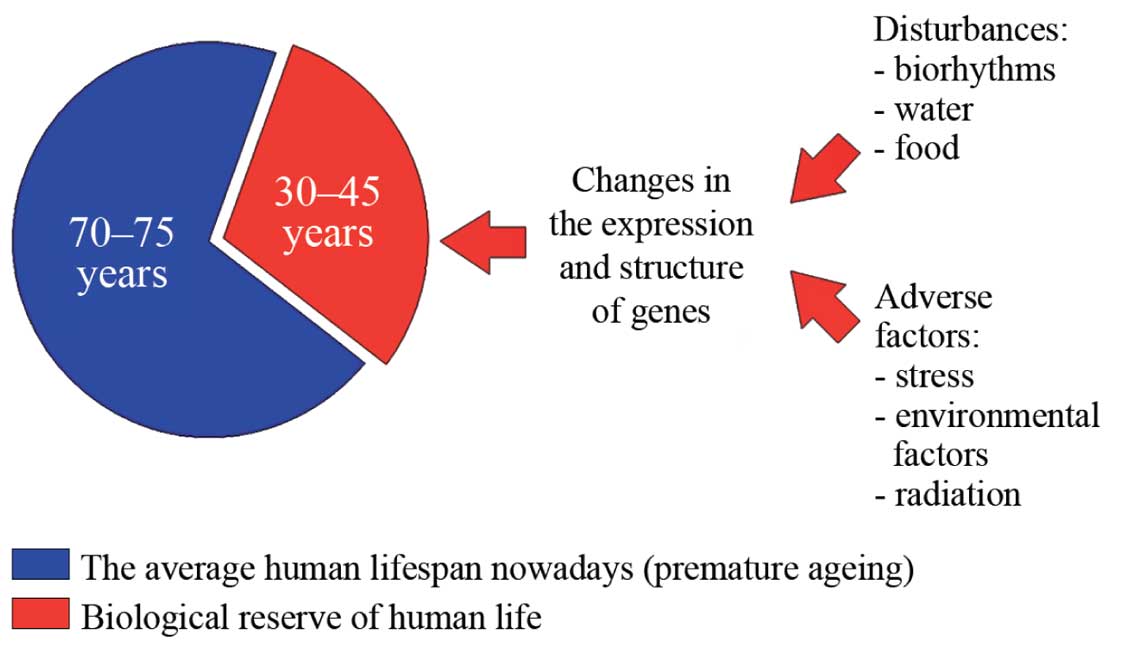
Fig. 1. Potential increase in the average human lifespan up to the specific limit (biological reserve).
genes which regulate mechanisms of individual development and the onset of diseases [67].
The influence produced on gene expression permits correction of cell proliferation and differentiation decreased with age [26, 49]. The study of genetic mechanisms of ageing and development of age-related pathology underlies regulatory therapy — the employment of modulators of transcription, deterring and restoring genetically conditioned alterations occurring with age. It is important to know the genome, occurring disorders and to use substances producing selective effect on gene expression [49].
Designing of effective bioregulators which would contribute to the achievement of special life span limit and maintain major physiological functions constitutes a vital issue in modern biogerontology. Investigations in the problem focus on the role of peptides in prevention of premature ageing [36, 49].
Peptidergic regulation of homeostasis occupies an important place in a complex chain of physiological processes leading to the ageing of cells, tissues, organs and an organism in whole.
Morphological and functional equivalent of ageing consists in the involution of organs and tissues, primarily those referred to major regulatory systems — nervous, endocrine and immune ones. The data available suggest occurrence of age-associated hypoplasia, and in some cases even an atrophy of the pineal gland, thymus, brain cortex neurons and subcortical structures, retina, vascular wall, genital organs [20].
Figure 2

Figure 3
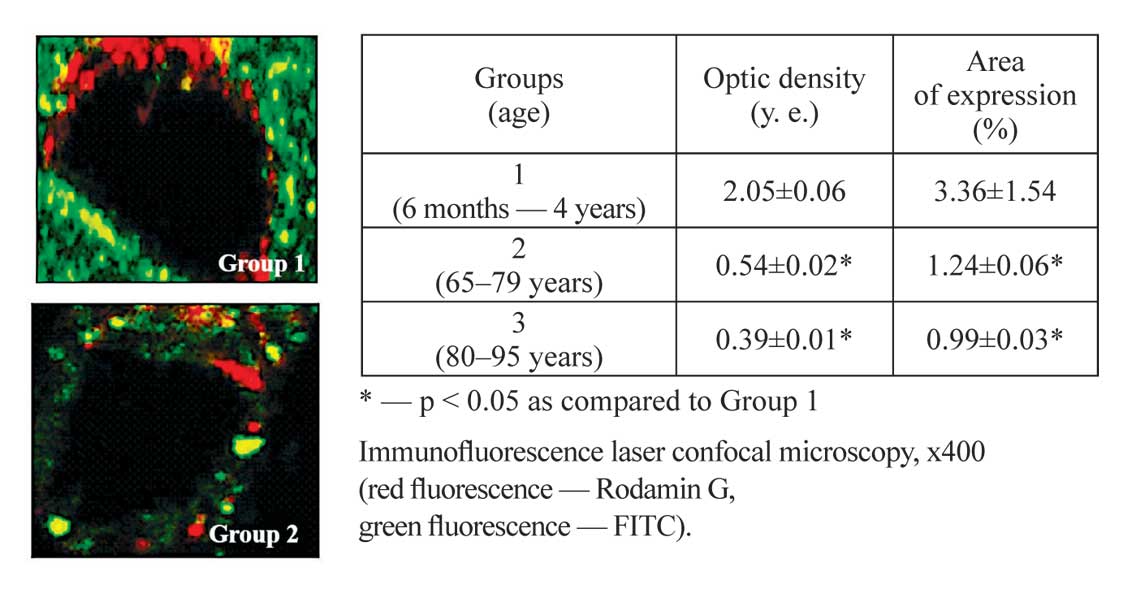
Fig. 3. Expression of transcription proteins (PAX 1) in human thymus epithelial cells (the study was conducted in cooperation with Prince Philippe Biomedical Research Center, Valencia, Spain).
In the 1970-ies we began investigation in the mechanism of immuno-depression both experimentally and clinically. We found out that with ageing there takes place an involution of the central organ of the immune system — thymus (Fig. 2, 3) and that of the neuroendocrine system — pineal gland. We also registered definite decrease of protein synthesis in cells of different organism tissues (Fig. 4).
To restore functions of thymus, pineal gland and other organs we developed a special method for isolation and fractionating of low-molecular peptides from extracts of these organs [24, 25].
On the organism level we have registered in different animals a significant variety of biologic effects exerted by small peptides especially by peptides of thymus (pharmaceutical “Thymalin”) and pineal gland (pharmaceutical “Epithalamin”) [3, 8, 13, 15, 36, 45, 46, 53, 57].
Figure 4
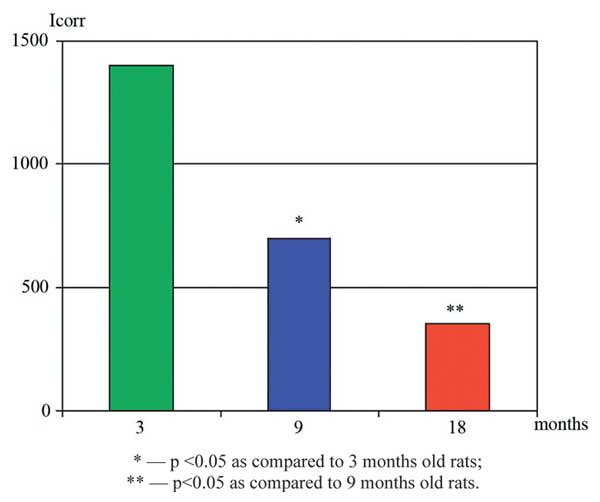
In numerous experiments, these peptide preparations contributed to a reliable increase in animal mean lifespan up to 25–30% as compared to control [4, 5, 9, 16, 24, 25]. The majority of experiments registered some increase in the maximum life span. The most significant effect in the increase of the maximum life span was noted in CBA mice administered with peptide Ala-Glu-Asp-Gly. It made 42.3% [8]. Of particular importance is a correlation between mean lifespan and the main index of cellular immunity
(reaction of blast-transformation of lymphocytes with phytohaemagglutinin) determining T-lymphocytes function in animals exposed to the effect of thymus and pineal gland preparations (Fig. 5) [9].
A significant increase in the mean lifespan of animals was evidently caused by a reliable anti-tumour activity of low-molecular peptides isolated from thymus and pineal gland which is confirmed throughout 55 experiments during 35 years. The animals manifested a sharp 1,4–7-fold decrease in malignant tumour incidence, both
Figure 5

Fig. 5. Peptide preparations effect on mean lifespan andreactionof blast-transformation of lymphocytes with phytohaemagglutinin in mice.
Figure 6

Fig. 6. Effect of pineal gland preparation on the frequency of tumor incidence in animals.
spontaneous and induced by irradiation or carcinogens (Fig. 6) [5, 9, 10, 16, 87]. It should be emphasized that this unprecedented decrease of tumour incidence was found in the majority of experiments (Table 1). Taking into consideration the general mechanism of carcinogenesis in all mammalians the results of these investigation have a great practical significance for tumour prevention in humans [10, 52].
Small peptides isolated from different organs and tissues as well as their synthesized analogues (di-, tri-, tetrapeptides) revealed a pronounced tissue specific (gene specific) activity both in cell cultures and in young and old experimental animals (Fig. 7).
Peptide tissue specific activity manifested in stimulation of protein synthesis in cells of those organs they had been isolated from. The enhancement of protein synthesis under the effect of peptide has been registered in young and old animals (Fig. 8).
Especially significant appeared restoration of reproductive function in old female rats subjected to the pineal peptide preparation treatment [24]. Thus, estrus phase in animals, analogous to menopause in women, lowered from the initial 95% down to
Table 1

52% after the drug administration, while other phases of the cycle, typical of the normal estrus, increased from the initial 5% up to 48%. Another experiment revealed that none of the old female rats got pregnant after mating with young males. Repeated mating after the administration of the pineal gland peptide preparation entailed pregnancy in 4 out of 16 animals which gave birth to 5–9 healthy off-springs each.
Thus there were ascertained main advantages of low-molecular peptides as compared to high-molecular protein regulators: they possess high biological activity, reveal tissue specificity and are
Figure 7

Fig. 7. Peptide tissue-specific (gene-specific) regulation.
neither species specific nor immunogenic. These features make regulatory peptides similar to peptide hormones [1, 4, 18].
A detailed study of molecular weight, chemical properties, amino acid composition and sequence of low-molecular peptides isolated from thymus, pineal gland and other organs had been carried out for many years [77, 78, 79, 80, 81]. The obtained data were used for chemical synthesis of several small peptides. A comparative analysis showed that biological activity of natural and synthetic preparations was largely identical. Thus, for example, thymus dipeptide Glu-Trp stimulated immunity, decreased ageing rate and suppressed occurrence of spontaneous tumours in animals [78, 80].
Biological activity of natural and synthetic peptides appeared to be similar in standard testing in tissue cultures and in animals [11, 12, 17, 42]. These results demonstrate prospects for application of these peptides as geroprotectors [37, 64, 71]. The necessity of searching for new drugs — geroprotectors dictated the onset of preclinical studies of these preparations on different structural levels.
Figure 8

Fig. 8. Effect of the liver and pineal peptide preparations on protein
synthesis intensity in hepatocyte monolayer culture in rats of different age.
On the level of cellular structures, small peptides activate heterochromatin in the cell nuclei in senile patients and facilitate the “release” of genes suppressed as a result of heterochromatinization of chromosome euchromatin areas (Table 2) [48, 74].
Structural condensation of chromatin is in close correlation with functional heterogeneity. Heterochromatinization is known to increase with age and correlate with inactivation of genes which were formerly active [75]. Tightly condensed heterochromatin areas of chromosomes are genetically inactivated and replicate lately.
Decondensed (euchromatin) areas of chromosomes function actively. Active chromatin is obviously a necessary factor for gene transcription activity [74]. As it was said above there are two forms of chromatin in the cellular nucleus: light euchromatin and dense heterochromatin located near nuclear membrane. Gene transcription takes place in the light phase, that’s in euchromatin. The amount of heterochromatin in the nucleus increases with ageing on average from 63% to 80%. Regulatory peptides entail the increase in the
Table 2

amount of euchromatin in the nucleus. This means that more genes become available for transcription factors, and transcription of gene information goes on more intensively as well as protein synthesis.
In other words the more euchromatin there is in the nucleus, the more intensive the protein synthesis goes on in the cell [48, 74, 75].
These experimental results brought us to a conclusion that chromatin heterochromatinization is a reversible process which confirms a possibility of restoring protein synthesis, hence, organism functions [49].
The capability of peptides to induce polypotential cells differentiation is of special significance (Fig. 9) [36]. Thus addition of retinal peptides to polypotential cells of Xenopus laevis early gastrula ectoderm led to the emergence of retinal and pigment epithelium cells. This outstanding result explains a pronounced clinical effect of the preparation of the retina in patients with retinal degenerations [36] and in animals with genetically determined retinitis pigmentosa [59].
Figure 9

Fig. 9. Induction effect of retinal peptides on the polypotent cells of Xenopus laevis early gastrula ectoderm.
Addition of small peptides to ectoderm polypotent cells in the same experimental model led to the onset of various tissues. These experiments showed that peptides are able to induce cell differentiation in regard to the structure of the substance added. The analysis of results obtained gives every ground to conclude that it is quite possible to induce deliberately differentiation of polypotent cells and to use biological reserve of various organs and tissues of the organism contributing to prolongation of life up to species limit.
The number of chromosome aberrations is used as a marker of DNA damages in an ageing organism. Somatic mutations can occur due to accumulation of stable aberrations and underlie age-related pathology, including malignant neoplasia [85]. Reliable antimutagenic and reparative activity of thymus and pineal gland peptides have been confirmed by a reduction in the number of chromosome aberrations in the bone marrow cells and cornea epithelium cells in animals revealing accelerated ageing [14, 19, 49, 69].
On the level of gene activity regulation it was established that administration of peptides Lys-Glu and Ala-Glu-Asp-Gly to transgenic mice caused a 2—3.6-fold suppression of HER-2/neu gene expression (human breast cancer) as compared to the control group. This suppression is accompanied by a reliable reduction of the tumor diameter (Fig. 10) [15, 49].
It was revealed that addition of tetrapeptide Ala-Glu-Asp-Gly to the cultural medium of human lung fibroblasts induces telomerase gene expression and contributes to a 2.4-fold lengthening of telomeres. Activation of gene expression is accompanied by a growing number of cell divisions (by 42.5%), which is the evidence of Hayflick’s limit overcoming (Fig. 11) [40, 41]. This fact fully correlates with earlier stated maximum increase of animal life span (42.3%) after administration of this peptide [8].
Figure 10

Fig. 10. Peptides effect on the development of mammary adenocarcinoma and HER-2/neu oncogene expression in transgenic mice (the study was conducted in cooperation with the National Research Centre on Ageing, Ancona, Italy).
The effect of di- and tetrapeptides Lys-Glu, Glu-Trp, Ala-Glu- Asp-Gly, Ala-Glu-Asp-Pro on the expression of 15 247 murine heart and brain genes before and after peptides administration was studied with the employment of DNA-microarray technology [2].
In this experiment, there were used clones from the library of the National Institute on Aging, USA. This experiment provided unique data on alteration in the expression of different genes under the effect of peptide preparations (Fig. 12). An important conclusion driven from the experiment was that every peptide specifically regulates particular genes. Results of this experiment testify to the existing mechanism of peptide regulation of gene activity. It was also registered that dipeptide Lys-Glu, showing immunomodulating
Figure 11

Fig. 11. Overcoming human somatic cell division limit due to introduction of the peptide into the culture of the pulmonic fibroblasts.
Figure 12

Fig. 12. Peptide effect on gene expression in the heart of mice (the study was conducted in cooperation with the National Institute on Aging, Baltimore, USA).
activity, regulates gene interleukin-2 expression in blood lymphocytes [55].
On the molecular level, there was an obvious gap between multiple evidence of specific effects, caused by regulatory peptides in activation of gene transcription [6, 14, 23, 47, 52, 60, 69, 72, 84], and limited schemes of the process underlying the selective binding of the transcription factor with specific DNA sites. Meanwhile nonspecific binding of proteins with the DNA double helix was proved by physicochemical methods [83]. Activation of gene transcription in cells of higher organisms as a rule needs dozens of macromolecular activators and transcription factors.
We proposed a molecular model of interaction between regulatory peptides and DNA double helix in gene promoter region (Fig. 13, 14, 15, 16) [63, 65].
Geometrical and chemical complementarity of peptide amino acid sequence and DNA nucleotide pairs sequence was assumed as a basis for the molecular model. Regulatory peptide recognizes a specific site in the DNA double helix if its own amino acid sequence is complementary to the DNA nucleotide sequence for a sufficient
Figure 13

Fig. 13. Unfolded peptide Ala-Glu-Asp-Gly conformation (plane projection). There are shown end and side functional groups, capable of complementary interaction with DNA.
length. In other words their interaction is specific due to matching
sequences. Each sequence of the DNA double helix nucleotide pairs forms a unique pattern of functional groups on the surface of the DNA double helix major groove. A peptide in the unfolded - conformation can complimentary fit into the DNA major groove along the double helix axis. We used data on molecular geometry of the DNA double-helix and peptide -thread from scientific
Figure 14

Fig. 14. Metric location of functional groups exposed onto the surface
of the DNA major groove in case of embedding of each nucleotide pai
into DNA double helix. Dash line – perpendicular plane, where
aromatic structures of nucleic bases are located.
—NH2 – proton donors groups;
=7N – proton acceptors groups;
—CH3 – hydrophobic (methyl) group.
publications in order to identify nucleotide pairs sequence for specific binding of the DNA and peptide Ala-Glu-Asp-Gly. The screening conducted showed that this tetrapeptide can be located in the DNA major groove with the ATTTG (or ATTTC) nucleotide sequence on the main chain in compliance with the complementarity of disposition of their functional groups [83].
Figure 15

For experimental testing of the molecular model there were used synthetic preparations: DNA [poly(dA-dT):poly(dA-dT)] (double helix) and tetrapeptide Ala-Glu-Asp-Gly. Gel chromatography helped to prove that peptide Ala-Glu-Asp-Gly forms stable intermolecular complex with the DNA double helix (Fig. 17) [65].
Complementary binding of the peptide with nucleotides sequence on the leading strand TATATA of the double helix can be conducted by six hydrogenous and one hydrophobic bonds between functional groups of both participants.
Figure 16
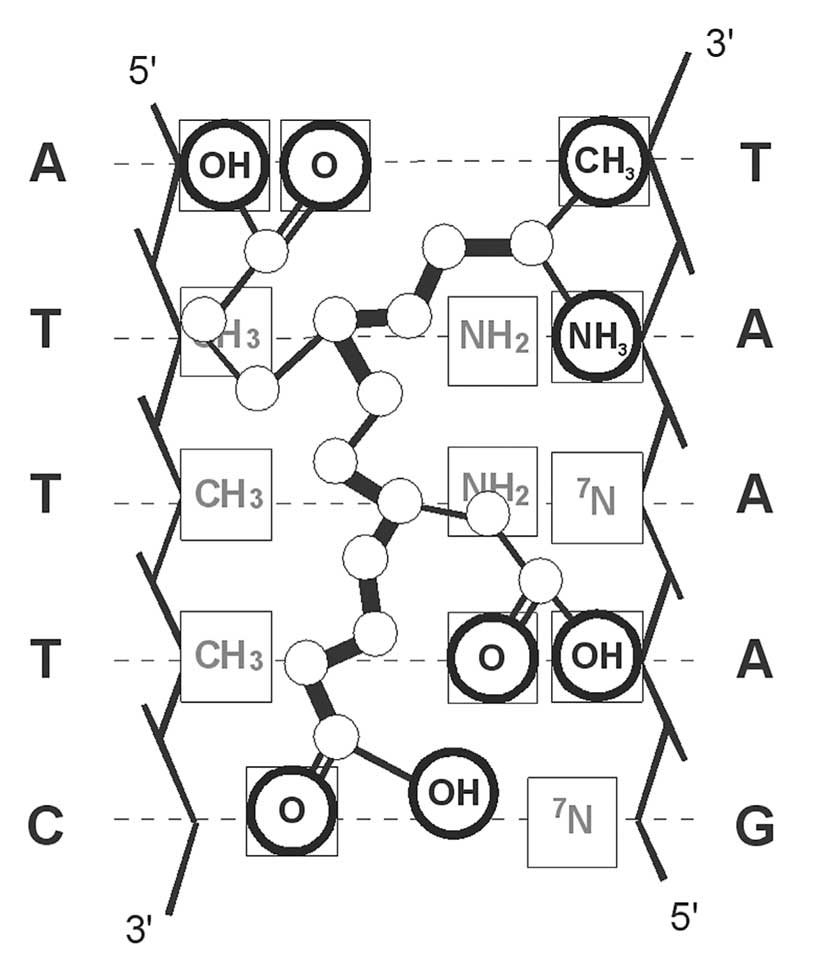
Fig. 16. Scheme of complementary interaction of tetrapeptide Ala-Glu-Asp-Gly with DNA double helix (“DNA-tetrapeptide” complex on the promoter segment of telomerase gene).
Under normal physiological conditions DNA exists in the form of a double helix two polymeric strands of which are kept together by hydrogenous bindings between pairs of bases of each chain.
Most of the biological processes with DNA participation (transcription, replications) need the double helix to undergo disjunction into separate strands. In particular, it is known, that local separation of double helix strands precedes gene transcription by RNA polymerase. For the transcription onset (synthesis of the matrix RNA) the DNA double helix has to be freed from histones,
Figure 17
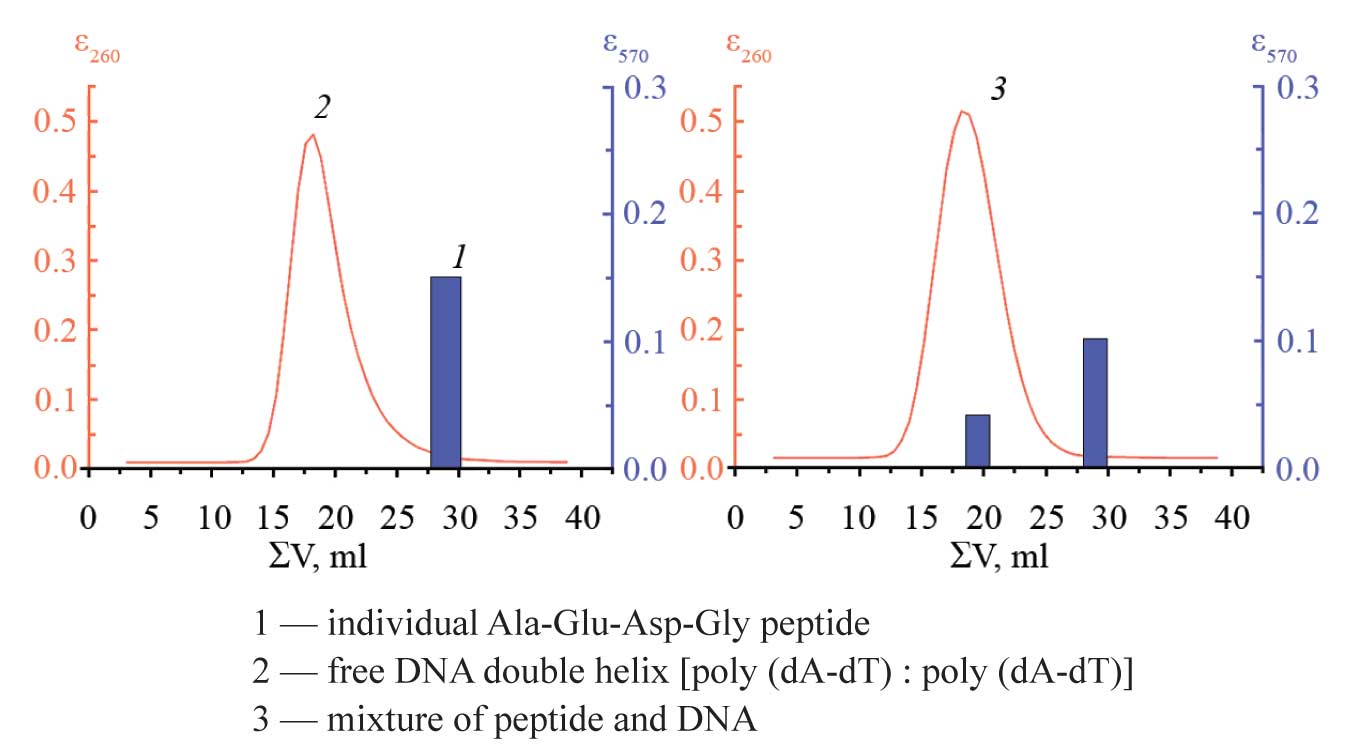
Fig. 17. HPLC of peptide and DNA on sefadex G-25 in physiological solution at room temperature.
Figure 18
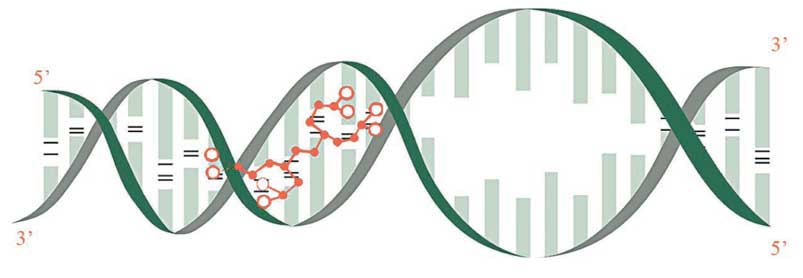
Fig. 18. The scheme of local separation of strands [poly (dA-dT) : poly (dA-dT)] as a result of peptide Ala-Glu-Asp-Gly binding in DNA double helix major groove.
and in the place where the matrix RNA synthesis starts, the strands of the double helix should be separated (Fig. 18).
Concentration dependent hyperchromic effect (increased optic density 260 nm) was found by spectrophotometery of solutions containing synthetic DNA double helix and tetrapeptide Ala-Glu-Asp-Gly. The hyperchromic effect points out a partial destruction of hydrogen bonds between nucleotide pairs of the double helix and local separation of its strands (allosteric conformational changes) [65].
It was experimentally revealed that separation (melting) of free DNA strands occurs at the temperature +69.5°С. In the “DNAtetrapeptide” system melting of the double helix occurred at the temperature +28°С and was characterized by approximately 2-fold decrease in the values of entropy and enthalpy [66]. This fact points out a thermodynamically simplified way of the DNA strands separation in temperature settings typical of biochemical processes of the majority of living organisms. Thus, DNA strands separation under physiological temperature is not a denaturation but a typical feature of protein synthesis initiation. In vitro experiments show that a small peptide of the definite structure and amino acid sequence can participate in activation of genes transcription on the stage of strands separation in the DNA double helix. Biochemical aspect of this phenomenon consists in similarity of structure and amino acid sequence of a regulatory peptide and a specific segment of the peptide chain of the macromolecular transcription factor.
Thus, the studies of peptides biological activity on different structural levels and of physicochemical processes of their interaction proved an indubitably high physiologic activity of peptide regulators and prospects for their further use. Major conclusion reads that peptides are capable of regulating gene expression. Pre-clinical trials demonstrated high biological activity and safety of synthesized peptides [35, 43, 56, 58].
Thus, the administration of peptides Lys-Glu, Ala-Glu-Asp-Gly to animals contributed to a reduced incidence of tumours and an increase in their mean lifespan [39, 82, 88]. Peptide Ala-Glu-Asp-Pro stimulated nerve regeneration [86], peptide Lys-Glu-Asp-Trp decreased blood glucose level in animals with experimental diabetes mellitus [44], peptide Ala-Glu-Asp increased osseus tissue density, peptide Ala-Glu-Asp-Leu contributed to the restoration of bronchial epithelium cells functions [61], peptide Ala-Glu-Asp-Arg restored myocardic cells functional activity [62].
There are still in progress studies of peptide preparations isolated from the cartilage, testes, liver, vessels, urinary bladder, thyroid, as well as synthesized peptides regulating functions of the brain, retina, immune system, proliferation and differentiation of polypotent cells. These physiologically active substances possess, as a rule, a substantial tissue specific effect and are obviously useful for designing new drugs on their basis applicable in bioregulation therapy [35].
Application of peptide bioregulators in monkeys. Taking into consideration a reliable biological activity of peptides we found it reasonable to study the effect of regulatory endocrine support supplement peptides in monkeys (Macaca mulatta) [28]. Restoration of the melatonin level in old monkeys (20-26 years old) up to normal (typical for young animals 6-8 years old) following administration of the peptide preparation was among the most significant achievements (Fig. 19) [45].
The same old monkeys revealed restoring to normal indices of a daily rhythm of secretion of the main hormone of adrenal gland — cortisol (Fig. 20). Administration of the peptide or pineal preparation to old animals led also to restoration of glucose tolerance disturbed with ageing. Restoring effect of pineal peptides in respect to the function

